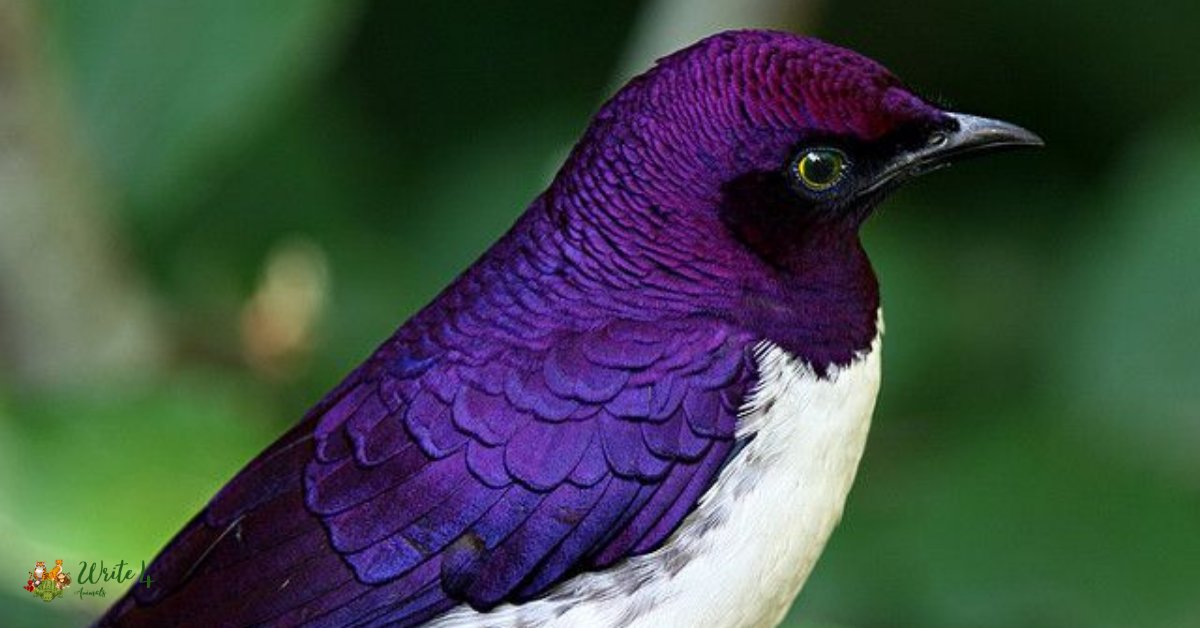Nature has always been a canvas of vibrant colors, each hue telling a unique story of adaptation, evolution, and survival. While greens and browns dominate the natural palette, there’s a certain mystique associated with the color purple.
Rare and captivating, purple animals are a testament to the diversity and wonders of the animal kingdom. In this exploration, we’ll embark on a journey to discover 15 remarkable purple animals that defy the conventional expectations of wildlife aesthetics.
15 Purple Animals in the World
1. Purple Jewel Beetle
In the realm of insects, the Purple Jewel Beetle stands as a shining example of nature’s metallic masterpiece and animal that is purple . With its captivating purple sheen, this beetle showcases the incredible diversity of colors found in the insect kingdom.
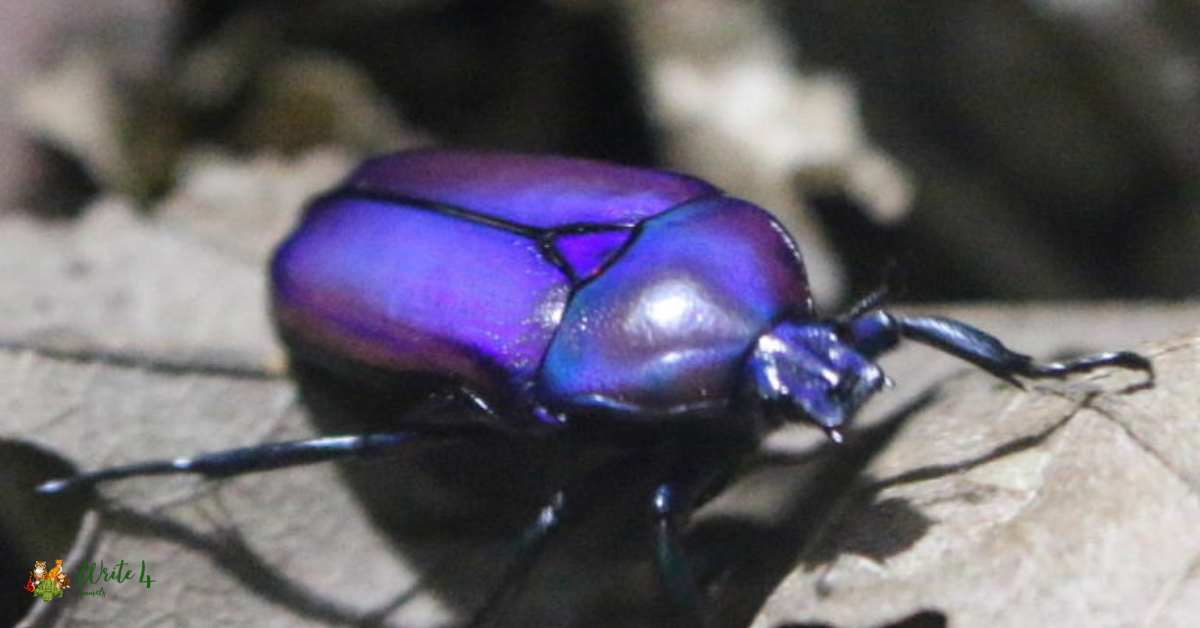
Distributed across various ecosystems, the Purple Jewel Beetle contributes to pollination and nutrient cycling, highlighting the interconnected roles insects play in terrestrial environments.
Its iridescent appearance serves as a beacon of beauty, encouraging us to appreciate the often-overlooked brilliance of the smaller inhabitants that share our world.
2. Purple Sea Slug
Delving into the depths of marine ecosystems, the Purple Sea Slug emerges as a floating jewel, adorned in hues of royal purple. Drifting gracefully through the ocean currents, this captivating creature captures the essence of a true purple animal.
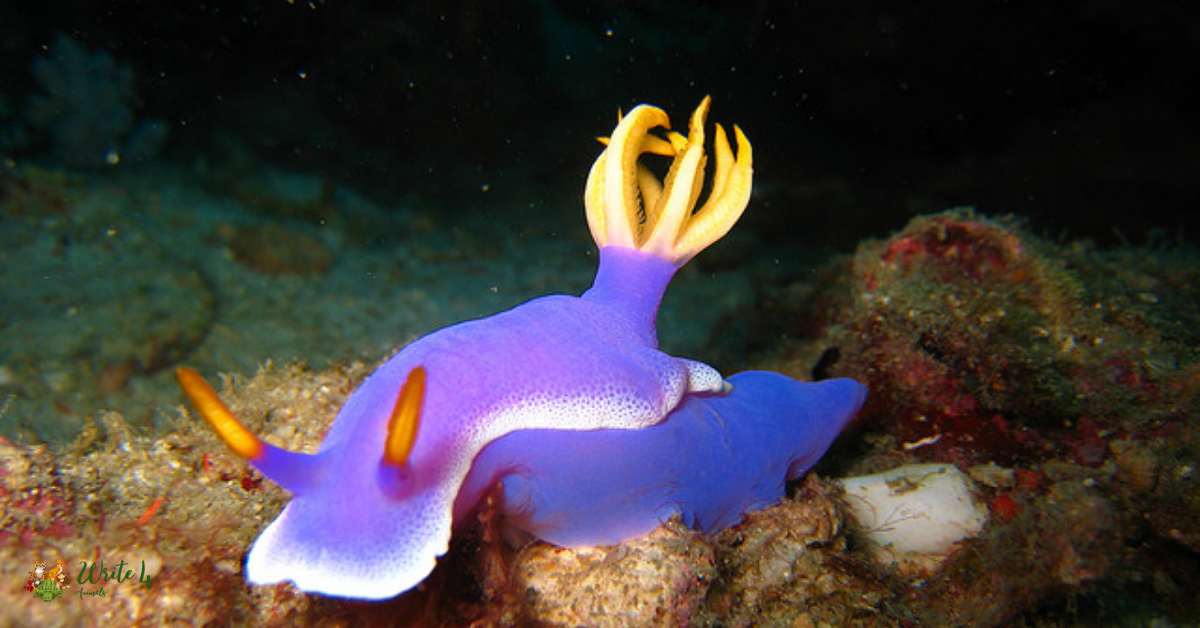
Its ethereal appearance, resembling a delicate piece of living jewelry, showcases nature’s ability to create beauty in the most unexpected places. As an integral part of marine biodiversity, the Purple Sea Slug serves as a reminder of the intricate and interconnected web of life beneath the ocean’s surface.
From its graceful movements to its stunning coloration, this sea slug adds a touch of enchantment to the mysterious world of the deep blue sea.
3. Purple Honeycreeper
Venturing into the tropical rainforests of Central and South America, we encounter the Purple Honeycreeper, a dazzling avian jewel distinguished by its vibrant purple plumage.
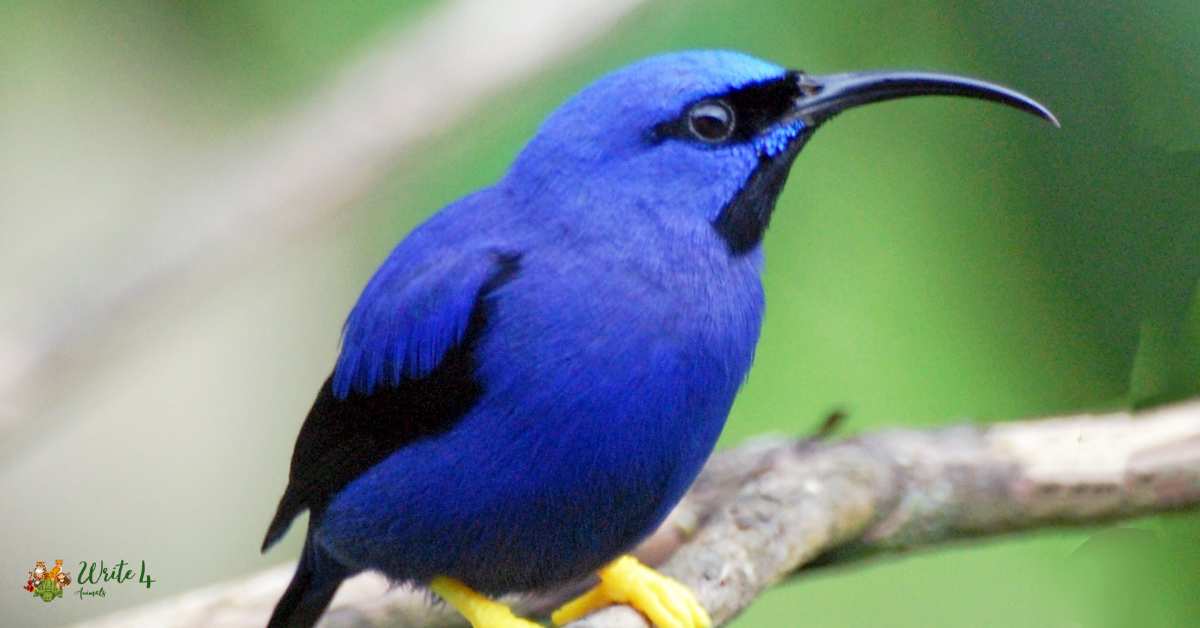
As a vivid representation of a purple animals, this small bird contributes to the kaleidoscope of colors found in its lush habitat. With its slender beak and iridescent feathers, the Purple Honeycreeper is not only a visual delight but also plays a crucial role in pollination, showcasing the interconnected relationships within ecosystems.
Its presence highlights the rich biodiversity of tropical regions, where every hue serves a purpose in the intricate dance of nature.
4. Yellowstriped Fairy Basslet
Beneath the ocean’s surface, the Yellowstriped Fairy Basslet emerges as a vivid and captivating purple animal. Inhabiting coral reefs, this tiny fish is adorned with purple and yellow stripes, contributing to the vibrant palette of underwater ecosystems.
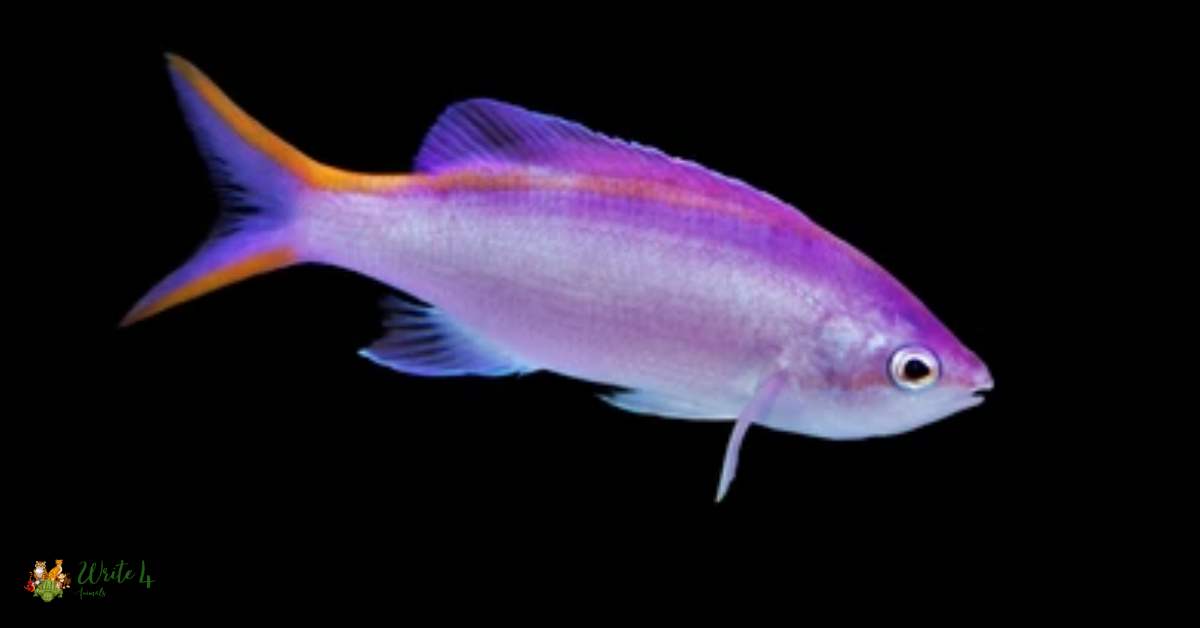
Despite its small size, the Yellowstriped Fairy Basslet plays a significant role in maintaining the health of coral reefs by participating in symbiotic relationships and acting as a key player in the delicate balance of marine life.
Its presence serves as a reminder of the breathtaking beauty hidden within the intricate structures of coral reefs and the vital role these ecosystems play in supporting marine biodiversity.
5. Purple Emperor
Taking flight into the European skies, the Purple Emperor butterfly graces our world with its majestic presence. As a royal representative of the insect kingdom, this purple animal displays intricate patterns and hues on its wings, captivating observers with its aerial dance.
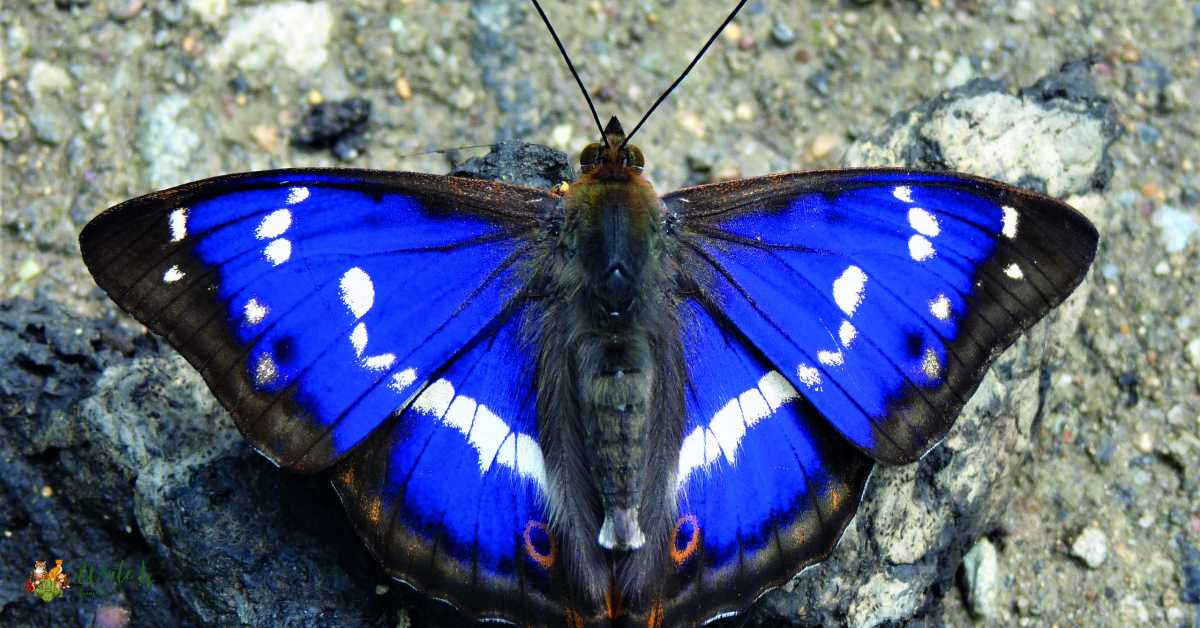
The Purple Emperor, known for its elusive nature, symbolizes the ephemeral beauty of the natural world. Found in woodlands and meadows, it contributes to pollination, playing a vital role in the life cycle of plants.
Its regal appearance and graceful flight inspire admiration and awe, reminding us of the delicate balance maintained by even the smallest inhabitants of our terrestrial ecosystems.
6. Blue Pleasing Fungus Beetle
On the forest floor, the Blue Pleasing Fungus Beetle emerges as a tiny, iridescent jewel with shades of purple and blue. This remarkable beetle, a true representative of an animal that is purple, showcases nature’s intricate designs even in the most unexpected places.
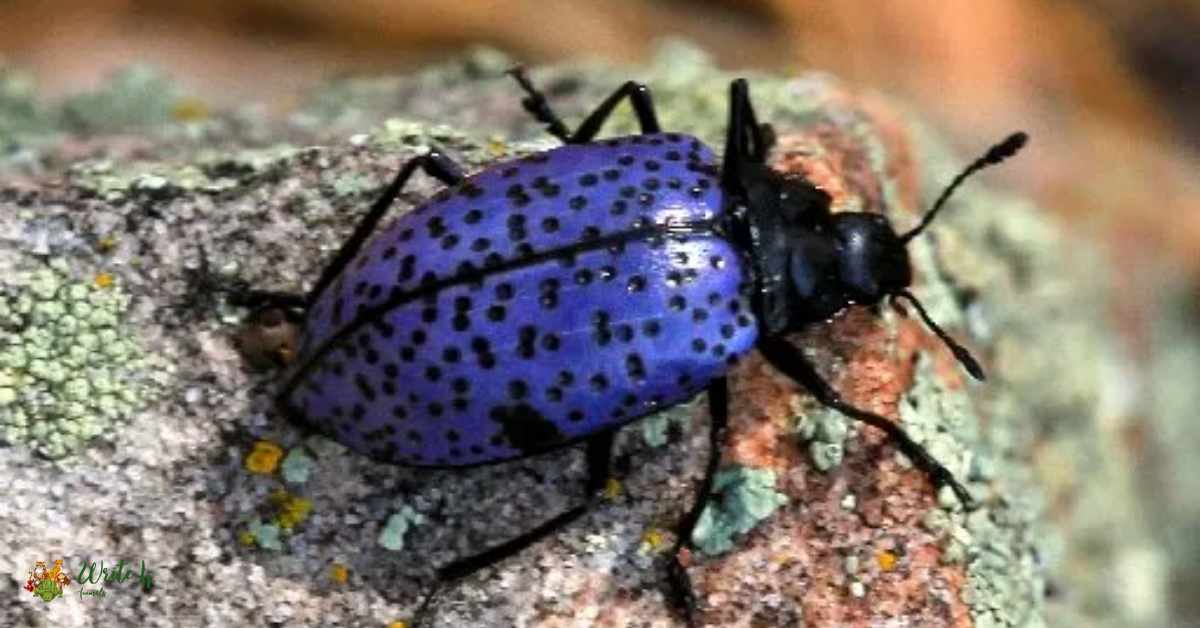
Found in various ecosystems around the world, this beetle plays a crucial role in recycling organic matter, contributing to the balance of forest ecosystems. Its vibrant coloration serves as a form of communication and defense, highlighting the diverse strategies employed by insects in their interactions with the environment.
The Blue Pleasing Fungus Beetle stands as a testament to the hidden beauty that can be uncovered by those who explore the microcosms of the natural world.
7. Purple Grenadier
Amidst the rainforests of Africa, the Purple Grenadier flits through the canopies, showcasing its striking purple plumage. As a remarkable representative of avian beauty, this finch brings a burst of color to the verdant landscapes it calls home.
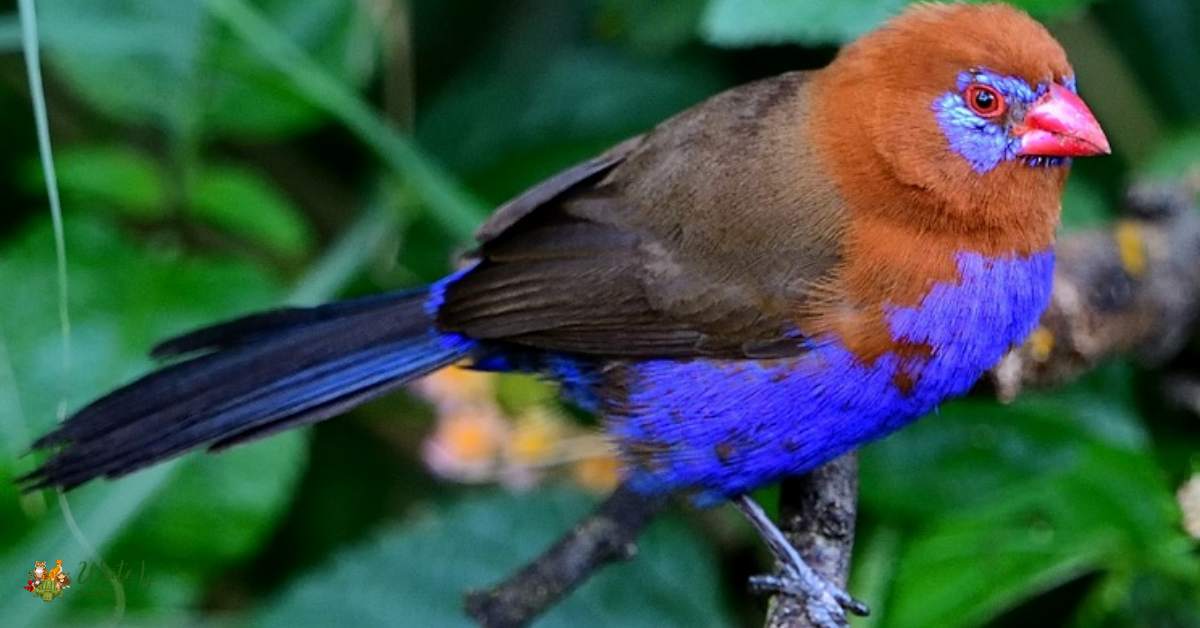
The Purple Grenadier’s presence adds vibrancy to the dense foliage, symbolizing the intricate tapestry of life in tropical ecosystems. With its agile flight and melodic calls, it contributes to the symphony of sounds and colors that define the avian world.
As a purple animal, the Purple Grenadier stands as a testament to the diversity and splendor of African birdlife, captivating the hearts of birdwatchers and nature enthusiasts alike.
8. Indian Purple Frog
Venturing into the Indian subcontinent, we encounter the Indian Purple Frog, an enigmatic amphibian with deep purple skin. This remarkable creature, representing a unique purple animal, dwells in the Western Ghats, showcasing the biodiversity of this ecologically significant region.
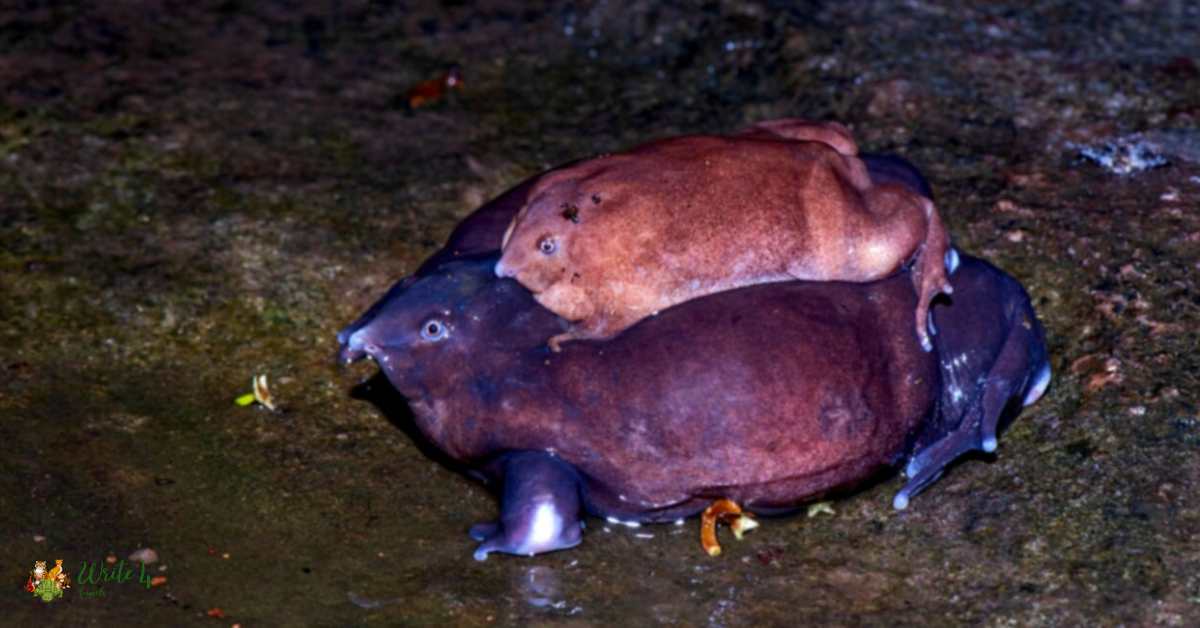
The Indian Purple Frog’s distinctive appearance and subterranean lifestyle make it a symbol of the hidden wonders that exist within Earth’s varied landscapes.
As an essential player in maintaining soil health and insect control, this frog underscores the interconnected relationships within ecosystems. Its royal hue serves as a reminder of the diverse and fascinating life forms that inhabit the terrestrial realms of our planet.
9. Purple Gallinule
Wading through marshes and wetlands, the Purple Gallinule emerges as a stunning waterbird with purple and blue feathers. As a charismatic representative of wetland ecosystems, this purple animal adds vibrancy to its surroundings.
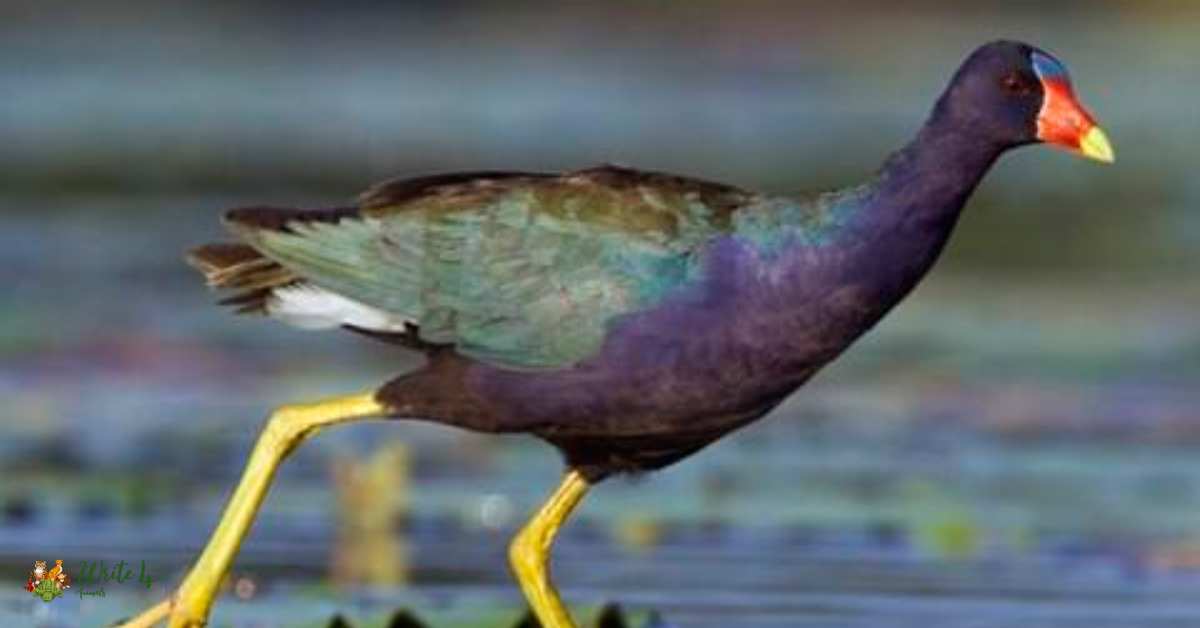
The Purple Gallinule’s striking appearance and unique behaviors make it a delight for birdwatchers and nature enthusiasts. Beyond its aesthetic appeal, this waterbird plays a crucial role in controlling insect populations and shaping the dynamics of wetland habitats.
With its vibrant plumage and graceful movements, the Purple Gallinule symbolizes the delicate balance and interconnectedness of life in marshy ecosystems.
10. Goniobranchus kuniei
Diving back into the ocean, we encounter Goniobranchus kuniei, a mesmerizing sea slug known for its captivating purple and orange coloration.
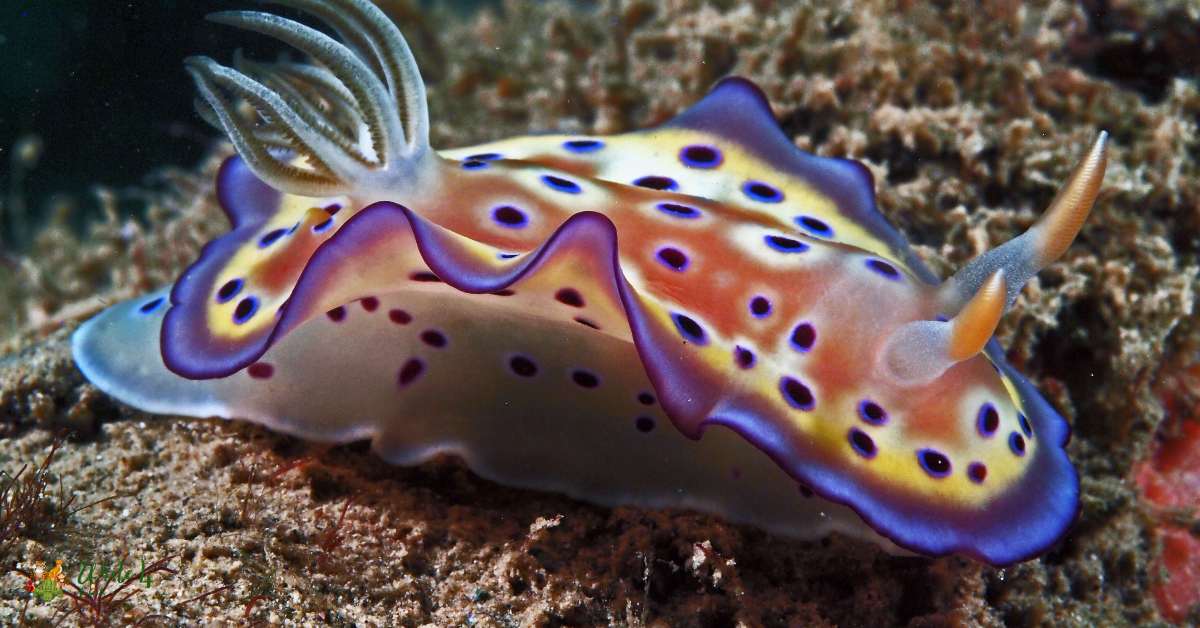
As an underwater splendor and representative of purple animals in coral reefs, this species contributes to the breathtaking diversity of marine life. Goniobranchus kuniei’s vivid colors serve as a form of protection, warning potential predators of its toxicity.
Found in the vibrant ecosystems of coral reefs, this sea slug adds to the visual spectacle of underwater landscapes, emphasizing the importance of conservation efforts to protect these delicate and intricate environments.
11. Sea Urchin
Delving into the realm of oceanic sculptures, the Sea Urchin takes center stage with its vibrant purple hue. As a unique and vital member of marine ecosystems, this prickly creature adds to the mosaic of life found in rocky or sandy seabeds.
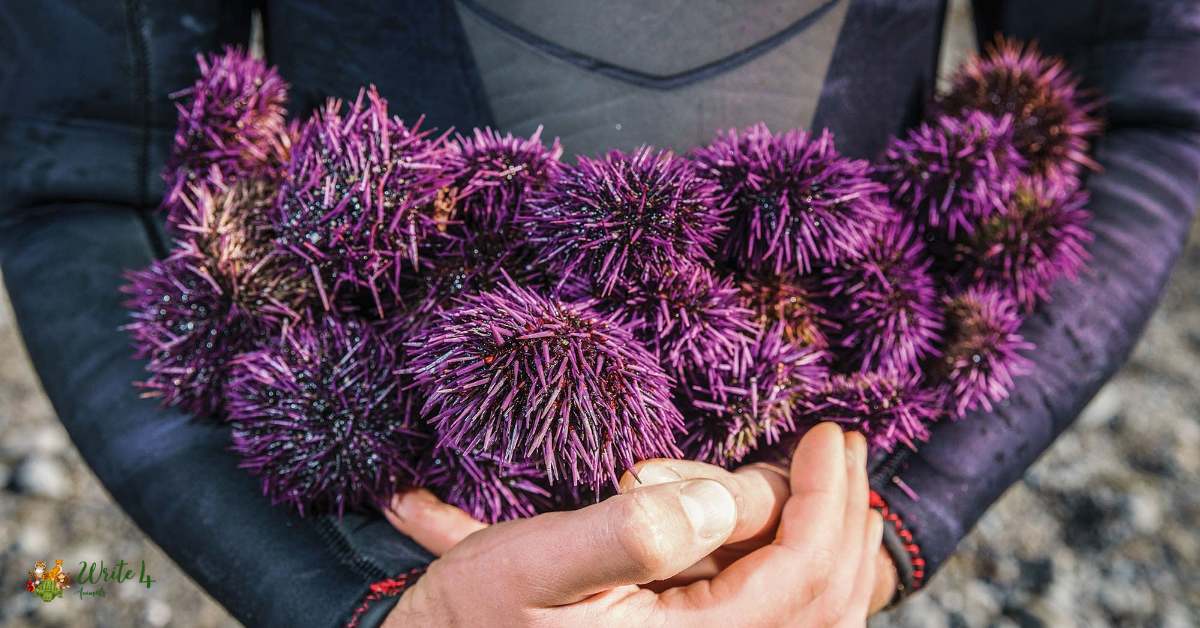
The Sea Urchin’s intricate design, adorned with purple spines, serves both as a form of protection and a testament to the beauty found in the depths of the ocean.
Its role in maintaining the health of coral reefs and seabed environments makes it a crucial player in the intricate web of life beneath the waves.
12. Purple Sea Star
Adorning rocky shores and seabeds, the Purple Sea Star emerges as coastal royalty with its vibrant purple coloration. As a captivating representative of intertidal zones, this sea star adds a touch of regality to coastal ecosystems.
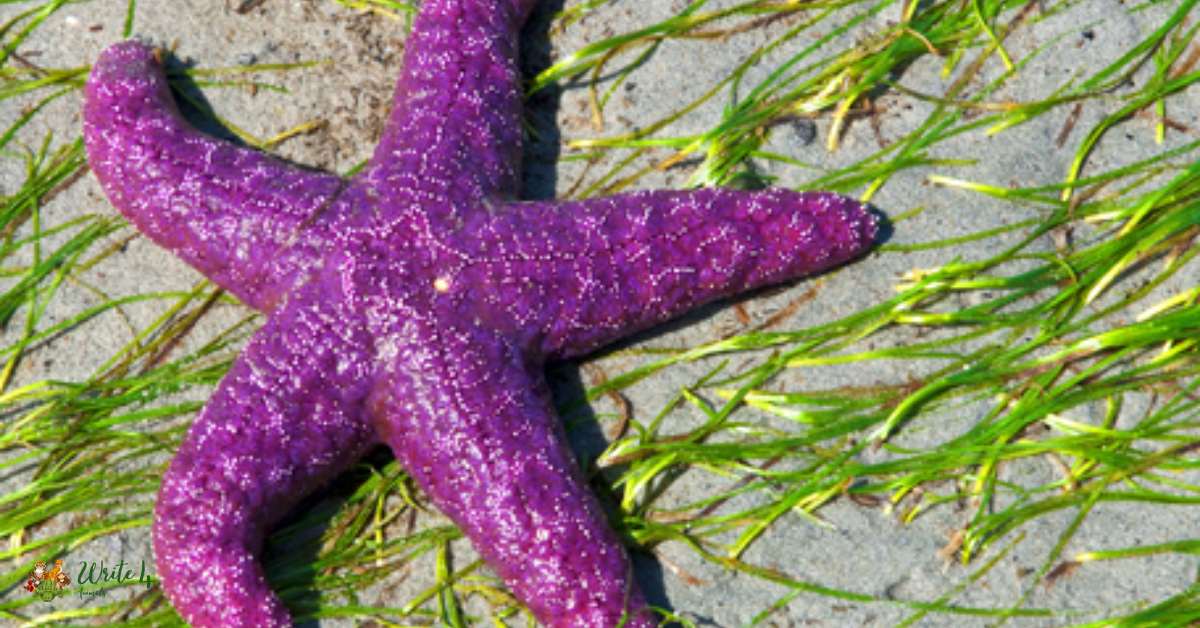
Beyond its aesthetic appeal, the Purple Sea Star plays a critical role in maintaining the balance of marine life by controlling the populations of mollusks and other invertebrates.
Its presence on rocky shores symbolizes the resilience and adaptability of marine organisms, demonstrating the delicate dance of life along the water’s edge.
13. Spanish Shawl
The Spanish Shawl, a mesmerizing purple sea slug found in the Pacific Ocean, stands out as an enigmatic marine creature. Characterized by its vibrant purple coloration, this captivating invertebrate showcases the mesmerizing diversity of ocean life.
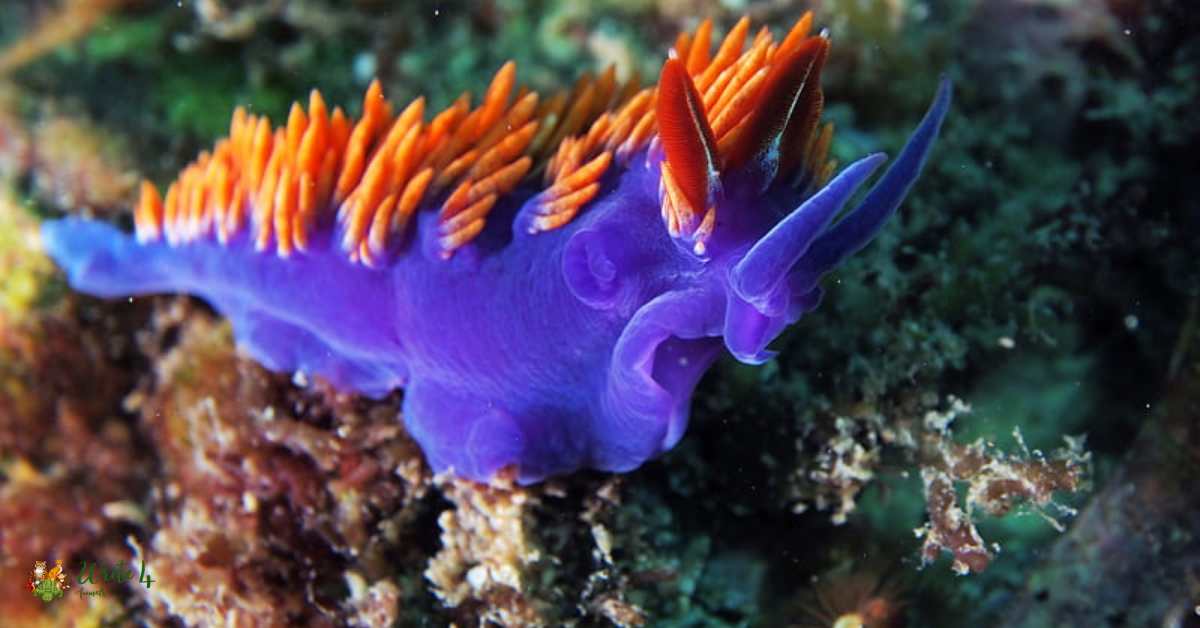
The Spanish Shawl’s delicate, flowing appendages and intricate patterns make it a true masterpiece of the deep. As a purple animal, it symbolizes the elegance and beauty that thrive beneath the waves, reminding us of the rich biodiversity present in our oceans.
Its royal hue serves as a testament to nature’s artistic prowess, enchanting marine enthusiasts and scientists alike with its alluring charm.
14. West African Fiddler Crab
Venturing into brackish water habitats, the West African Fiddler Crab captures attention with its vibrant purple claws. As a coastal marvel and representative of purple animals in mangroves and tidal flats, this small crab contributes to the dynamic ecosystems of intertidal regions.
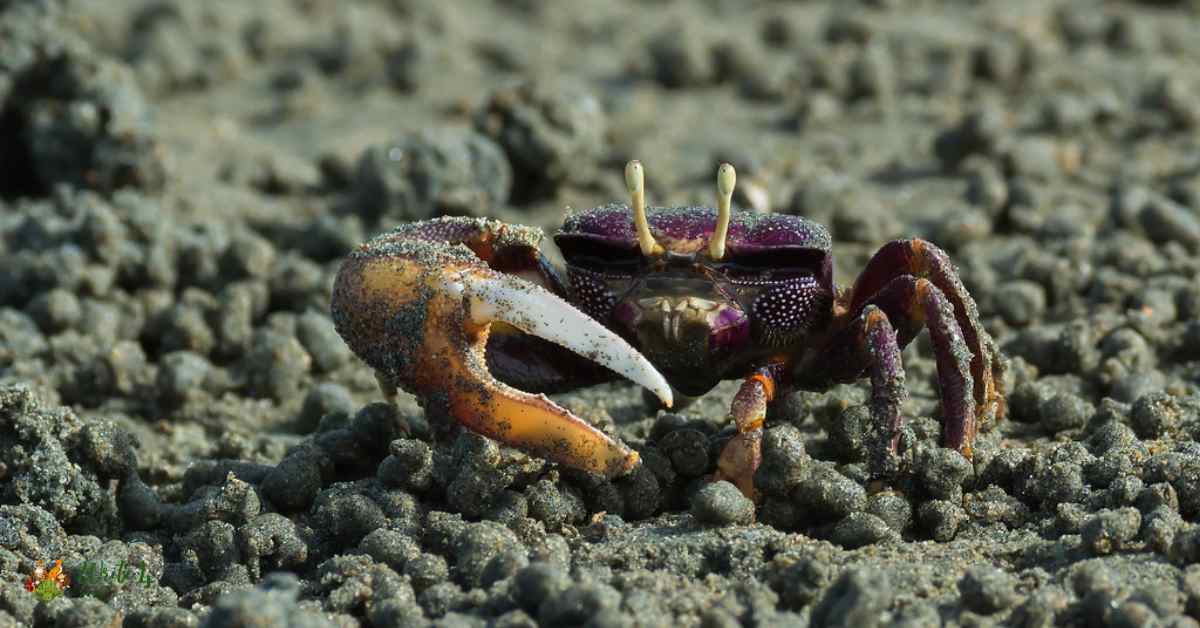
The West African Fiddler Crab’s distinctive coloration and unique behaviors make it a fascinating subject for ecological studies, shedding light on the complex interactions within these transitional environments.
Its presence symbolizes the resilience of life in habitats that bridge the gap between land and sea.
15. Royal Gramma
Our journey concludes in the warm waters of the Caribbean, where the Royal Gramma reigns with its regal purple and yellow hues. As a vibrant representative of coral reef ecosystems, this small reef fish adds splendor to the underwater landscapes it inhabits.
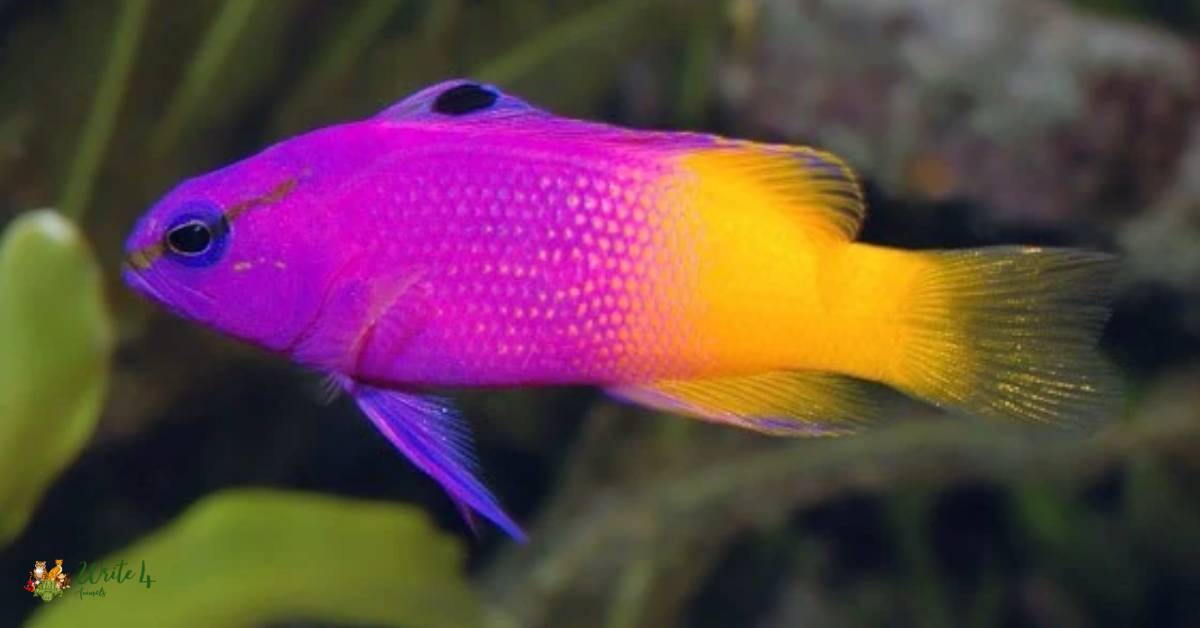
Beyond its striking appearance, the Royal Gramma plays a vital role in maintaining the delicate balance of coral reefs by participating in symbiotic relationships and contributing to the overall biodiversity of these underwater wonderlands.
Its royal colors and graceful movements serve as a testament to the intricate beauty found in the depths of the ocean.
Frequently Asked Questions
What makes an animal purple?
The purple coloration in animals is often the result of pigments or structural features that interact with light. Pigments like carotenoids and melanins can contribute to purple hues, while structural colors arise from the microscopic arrangement of cells or layers in an animal’s skin, scales, feathers, or exoskeleton.
Are there many purple animals in the world?
While animals can be found in a wide array of colors, purple animals are relatively less common compared to other hues. However, various species, from sea creatures to birds and insects, showcase shades of purple in their plumage, skin, or exoskeleton, contributing to the diverse palette of colors in the animal kingdom.
What purpose does the purple color serve in animals?
The purple color in animals can serve multiple purposes. In some cases, it acts as a form of camouflage, helping animals blend into their surroundings. For others, it may serve as a warning signal, indicating toxicity or danger to potential predators. Additionally, the purple hues in some animals, such as birds and insects, can play a role in attracting mates during the breeding season.
Are there any poisonous purple animals?
Yes, some purple animals possess toxins as a means of defense. For instance, certain species of frogs, sea slugs, and insects with purple coloration may use their vibrant appearance to signal potential predators about their toxicity. This serves as a warning, discouraging predators from attempting to consume them.
Can purple animals change color?
Some animals, particularly invertebrates like cephalopods (e.g., octopuses and squids), have the ability to change color for various reasons, including communication, camouflage, or as a response to environmental stimuli. However, not all purple animals possess this color-changing capability.
Where can I find purple animals in the wild?
Purple animals can be found in various ecosystems around the world. Sea slugs and sea stars inhabit oceanic environments, birds like the Purple Honeycreeper reside in tropical rainforests, and insects like the Purple Jewel Beetle can be found in diverse terrestrial habitats. Exploring these ecosystems, whether through nature reserves, coral reefs, or forests, offers opportunities to encounter these fascinating creatures.
Recmmended
1.15 Brown Animals in the World | Brown Animals names
2. 17 black snakes with white stripes | black and white snake
